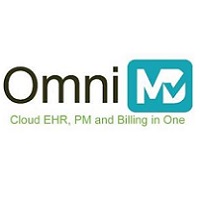 By OmniMD
By OmniMD
Twitter: @omnimd
Imagine a world where all patient health information is stored in one central place, allowing physicians to share information seamlessly across different platforms. The global healthcare ecosystem is ever-changing with rising costs as new technology strives to connect all data sources between payers, providers, vendors and other various health departments. There is a giant push for universal standard-based EHR usage, with numerous incentive programs pushing for wide-spread adoption. Progress is being made, and EHRs are playing a large role to moving toward this goal of interoperability.
Why is Interoperability So Challenging? – Lack of Standardization & System Architecture – A lot of disparate systems exist and few connect or ‘talk’ to each other. For a physician to get a full view of a patient’s health record, they will need to log into multiple systems to see past procedures, x-rays and lab results. Often time’s information is duplicated or incorrect compromising patient care. Eliminating the silos between data sources and connecting networks that relate to patient outcomes is the goal of interoperability.
Each system has its own language and inputs data in a specific way and exchanges patient information in a different way. The missing link to connecting systems is a HL7 interface. Traditional EHRs may lack these capabilities and require thousands of dollars and third-party fees to establish interoperability.
EHRs and Exchange Standardization
Many ecosystems are experimenting and implementing ways to connect all their networks together. Each healthcare system technology has its own standard, making it almost impossible to exchange information quickly.
FHIR provides a specification for a system to exchange data
According to a recent article in Health IT News, FHIR, or Fast Health Interoperability Resources, is a proposed interoperability standard developed by the healthcare IT standards body known as HL7. Health Level Seven International (HL7) is a not-for-profit, ANSI-accredited standards developing organization dedicated to providing a comprehensive framework and related standards for the exchange, integration, sharing and retrieval of electronic health information.(1) FHIR will facilitate the promise of one nationwide system for the exchange of data across different organizations and networks. This would be a tremendous boon to patients and significantly drop costs for all members of the ecosystem as providers adopt population health business models.
EHRs with Standard HL7 Interface Design
EHR interoperability is possible and straightforward if a system is utilizing a HL7 interface. Current technology with a hub-and-spoke technology architecture, allows providers the opportunity to connect with hundreds of payers, labs and patients easily. EHRs with these capabilities, make it easier for systems to exchange very specific pieces of information, rather than entire documents.
The Future of Interoperability
The future roadmap of interoperability is very promising. ONC and CMS efforts will be focused on the creation of standards, certification and security, including EHRs. Automated tools that match workflows will be the standard for EHR capabilities throughout all healthcare settings. We are already seeing technology shifts in EHRs through automation, rapid charting and reporting. The patient-provider experience is finally part of the equation. Systems are more intuitive, faster and connected to all necessary data sources.
This article was originally published on OmniMD and is republished here with permission.
